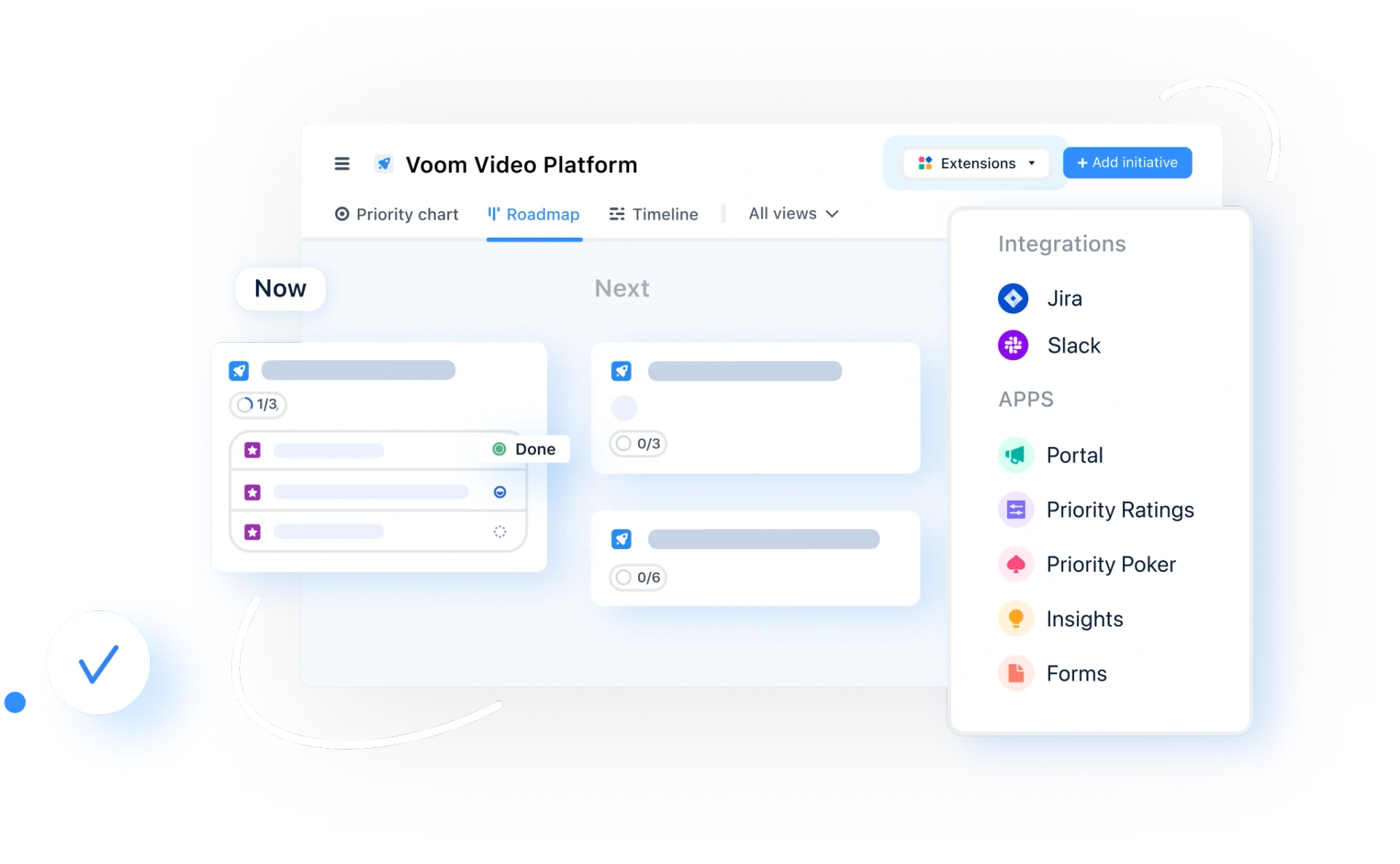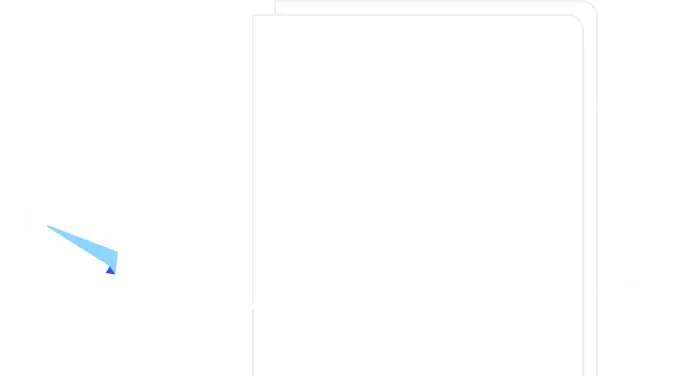Divergent Thinking
In today’s high-stakes, hybrid product environments — where hardware cycles and agile software development must coexist — product leaders need new ways of thinking. The old playbook of linear roadmaps and incremental feature shipping doesn’t cut it anymore, especially when internal teams are out of sync, customer needs are evolving, and decision-making is clouded by scattered data.
This is where divergent thinking becomes a strategic advantage. When applied intentionally, it unlocks product innovation, re-centers user problems, and challenges assumptions that keep teams stuck in cycles of safe, derivative delivery.
In this article, we dive deep into the world of divergent thinking and discover how it can help product leaders surface better options and make more informed decisions. We also compare divergent vs. convergent thinking.
What is divergent thinking? (and why it matters more than ever)
Definition of divergent thinking
Divergent thinking, often referred to as lateral thinking, is the process of creating multiple, unique ideas or solutions to a problem that you are trying to solve. Through spontaneous, free-flowing thinking, divergent thinking requires coming up with many different answers or routes forward.
Divergent thinking is the process of generating multiple possible solutions or ideas in response to a challenge, without prematurely narrowing in on a single "best" answer. It values breadth over judgment, possibility over certainty, and creativity over convention. For teams that build both software and physical products, divergent thinking can be a critical tool for maintaining relevance, adaptability, and customer focus.
Divergent thinking in product management is a deliberate mindset shift that helps teams:
Uncover unique solutions to user problems
Explore alternatives beyond the obvious or familiar
Create competitive differentiation in saturated markets
Align around the most strategic course of action after proper exploration
Comparing divergent vs. convergent thinking
So, what’s the difference between divergent vs. convergent thinking? As digital products are increasingly homogenized, divergent thinking helps teams by asking: “What problem are we solving, and what haven’t we tried yet?”
Convergent thinking is the opposite. It’s about identifying the best option from a set of possibilities.
It plays an equally important role, but only after exploration.
Why product leaders lean on divergent thinking in complex environments
There are times, especially when working in agile environments, where you have to think outside the box.
Divergent thinking usually happens in a free-flowing, spontaneous manner. Ideas appear in a random, non-linear manner, which opens the mind to potentially limitless solutions to problems that might not be obvious through linear, convergent thinking.
Divergent intelligence is an essential part of creative thinking. The best idea is never found by luck or pure chance. The creative process involves many steps that lead to new ideas.
Divergent thinking in product management can be the key to unlocking real value and elevating your products to new levels.
Let’s look at how it helps achieve that.
Breaking out of feature factory thinking
Experienced product leaders are all too familiar with feature factory thinking. The relentless focus on shipping outputs without solving meaningful user problems causes teams to jump straight from stakeholder request to Jira ticket, bypassing strategic discussion entirely.
This is especially common in hybrid teams where commercial stakeholders are pushing for features to support field sales or physical product launches. Unfortunately, this all just leads to bloated backlogs, rushed timelines, and features that miss the mark.
Divergent thinking interrupts that pattern. It encourages teams to take a breath, examine actual user needs, and evaluate which idea delivers the most long-term value. It also empowers product leaders to disrupt the norms. Instead of framing the conversation around “What can we build by Q3?”, it asks: “What are all the ways we might solve this problem in a way that creates lasting impact?”
Product discovery across multiple teams
Most modern product organizations are distributed and cross-functional, which means discovery involves voices from engineering, marketing, sales, support, and customer success.
When you layer in regional insights or team-specific constraints, it becomes even more important to ensure everyone is heard. This is where divergent thinking in product management shines. It creates a shared space for diverse inputs and assumptions, helping teams expand their understanding of the problem before converging on solutions.
Divergent thinking works particularly well at two key stages of discovery:
Problem framing: Teams ask open-ended questions, like “What problem are we really solving?” or “What pain points aren’t we addressing yet?”
Solution ideation: Teams generate multiple options without judgment, often surfacing ideas that wouldn’t have come from a single discipline.
Divergent thinking doesn’t just improve idea quality, it builds alignment across silos and creates early buy-in. That alignment leads to a faster and smoother execution, especially when used in high-complexity projects.
The Double Diamond framework, developed by the Design Council in 2003, is perfect for this. It divides the creative process into four phases across two diamonds (hence the name), which represent divergent and convergent thinking. It provides a visual representation of the design process, emphasizing both divergent and convergent thinking for a holistic process.
Exploring outcomes over outputs
Product teams today are under pressure to deliver impact, not just output. But teams often fall back into output-focused shipping when processes lack structure or when legacy habits dominate.
There's an added challenge when it comes to building physical products, too. Much of the effort goes into what’s being built (like the firmware, enclosures, logistics, and integrations), with meaningful outcomes being forgotten.
Divergent thinking helps reframe the conversation around desired outcomes, such as reducing time to value, increasing customer satisfaction, or unlocking strategic market differentiation.
For example, instead of focusing only on improving a hardware dashboard’s performance, a divergent thinking approach might explore:
Reducing steps in the end-to-end user journey
Improving the setup process via in-app guides
Creating self-serve onboarding content that doesn’t rely on support staff
Partnering with the field team to introduce proactive feature education
By exploring different paths toward a goal, teams can avoid tunnel vision and uncover higher-leverage initiatives.
Divergent thinking is also a powerful input for scenario planning. When teams consider multiple future outcomes, both positive and negative, they can stress-test assumptions and reduce risk before investing in execution.
Divergent thinking in action across the product lifecycle
Divergent thinking isn’t a one-time exercise. You should use this methodology throughout your product lifecycle, especially when direction, scope, or strategy are at stake.
During discovery and research
Divergent thinking can be a great option in your product discovery techniques toolbag. For example, involving cross-functional teams in the discovery process expands the range of ideas early and avoids groupthink. This is especially important when the user's needs aren’t clearly defined.
Instead of assuming you know the problem, divergent thinking in product management encourages teams to ask broader questions, interrogate assumptions, and gather perspectives. This leads to a more robust and inclusive set of hypotheses to test and validate. This can also be linked to customer feedback software, using real-time user insights to validate the most promising ideas and discard those with less potential.
With divergent thinking, feedback isn’t just filtered through a single lens. Teams are encouraged to explore different interpretations of what customers are saying, leading to more nuanced problem framing.
During roadmap planning and visioning
Before locking in roadmap commitments, divergent thinking lets teams step back and ask: “What are all the possible ways we could achieve this goal?” It encourages exploration across feature sets, experiences, integrations, and go-to-market approaches, rather than defaulting to the most obvious features. This is especially useful when planning across multiple time horizons or platforms.
For example, you may need one path for improving user retention in software and another for reducing setup friction in hardware. Divergent thinking helps you visualize both and then prioritize based on strategic value.
During prioritization
Prioritization is often treated as an optimization problem, but what if your definitions of “value” or “effort” are outdated or biased? Divergent thinking helps challenge prioritization assumptions, especially in legacy organizations where product decisions have followed the same logic for years.
It’s especially helpful for hybrid organizations where one team’s effort is another team’s dependency. Divergent thinking helps uncover alternative build paths, ways to reduce complexity, and options that deliver value faster with fewer trade-offs.
Tools like Priority Poker apply divergent thinking directly by gathering multiple perspectives before converging on a final score.
During OKR setting
OKRs are meant to drive focus, but they can also create blind spots.
Divergent thinking helps teams challenge the assumptions behind their objectives and explore alternative ways to achieve them. Are there faster, more innovative paths forward? Are your current metrics still the right ones? By stepping outside the usual thinking, product leaders can identify bold, strategic initiatives that might otherwise be missed.
With product management software that supports OKRS, realigning OKRs around new opportunities is fast, focused, and deeply impactful.
From exploration to execution: When divergent thinking meets structure
The most innovative teams know when to explore and when to decide. Using a mix of divergent and convergent thinking can help teams focus on pure value during the development process. This is why we built airfocus to reflect the exact balance you need.
airfocus gives product teams the flexibility to explore ideas however they work best, with key features like:
Flexible views for different workflows
Custom scoring models to challenge assumptions
AI tools to speed up idea capture and analysis
Templates for roadmaps, canvases, OKRs, and more
Give your team room to think differently
If your product team is stuck in old habits, divergent thinking in product management might be the unlock you need — and airfocus provides the tools to get the most out of this exciting method.
Whether you're doing product discovery, planning a new roadmap, or realigning on OKRs, airfocus helps your team think differently and act decisively.
Want to see how it works in practice? Request a demo and discover how airfocus can support divergent thinking across your product lifecycle.

General FAQ

Glossary categories
Experience the new way of doing product management

Experience the new way of doing product management








